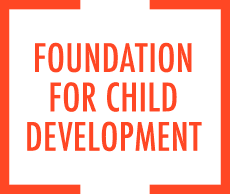https://www.fcd-us.org/mapping-a-p-3-continuum-map-p-3-as-the-foundation-of-education-reform/
Current education policy in the United States, which emphasizes high stakes testing of children, is unfair to many who do not experience an adequate education. Many children enter kindergarten on unequal footing due to variability in pre-kindergarten experiences, and, once children enter kindergarten, variations in education content and quality. This variability in prekindergarten experiences and subsequent schooling is a strong predictor of children’s achievement outcomes. These effects are even stronger for low-income children.
A PreK-3rd approach aims to level the academic playing field for all children by supporting efforts to align pre-kindergarten through third grade by reforming teacher preparation and certification and developing sequential learning experiences for children as they move from pre-kindergarten through Grade 3.
The Foundation for Child Development convened stakeholders to discuss next steps for moving a PreK-3rd agenda forward. Directions for next steps included:
1. Crafting a working definition of PreK-3rd. The definition for PreK-3rd must include voluntary universal pre-kindergarten for children, full-day kindergarten, and alignment of both through the third grade of elementary education. PreK-3rd can be an alignment of grade levels based on developmental and learning characteristics of children as they proceed from pre-kindergarten through third grade and including their after-school experiences.
2. Identifying and documenting specific examples of PreK-3rd and their effects on children.s learning. Examples of PreK-3rd exist, and can inform how to expand on current efforts or start up new ones.
3. Addressing financing and governance issues, which include targeting sources of funds, and developing plans for governance structures. One example of a well-performing governance structure is that of Chicago’s Child-Parent Centers, where the program is implemented within one administrative system, the Chicago public school system. Financing ideas can come from places already implementing parts of a PreK-3rd agenda, like California, Georgia, and New Mexico.
4. Addressing the recruitment, preparation, professional development, and retention of teachers. Participants agreed that current teacher education and credentialing are not adequately preparing teachers for the classroom.
5. Identifying key leverage points. Many stakeholders, who serve different and/or overlapping constituencies, were identified at the meeting. Engaging these stakeholders as well as colleague funders will be necessary to build consensus and move the PreK-3rd agenda forward.
6. Marketing the PreK-3rd message. Attention must be paid to the content of the message, as well as specific authoritative messengers. Issues raised by stakeholders who will oppose the initiative should be addressed. Careful attention to language and rhetoric when delivering messages will be crucial to the effectiveness of PreK-3rd.
